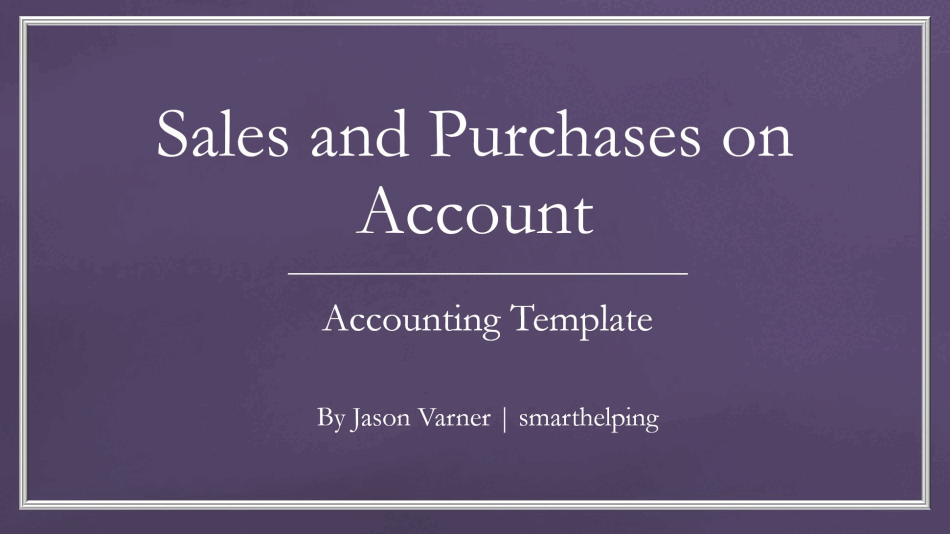3-Statement Modeling Helper for Sales on Account (Excel XLSX)
Excel (XLSX)
VIDEO DEMO
BENEFITS OF THIS EXCEL DOCUMENT
- A tool for producing up to 10-year 3-statement model output lines based on simple data entry.
FINANCIAL ANALYSIS EXCEL DESCRIPTION
Building a three-statement financial model that dynamically reflects the timing of cash collections from sales and the recognition of sales as revenue requires careful structuring to ensure accuracy and flexibility. This model integrates the income statement, balance sheet, and cash flow statement, with special attention to the accounts receivable component to handle the timing of revenue recognition and cash collections.
The model also handles payables on account for things such as inventory. Similar logic as you see below is integrated into all the formulas for inventory line items.
Here's a step-by-step process to build such a model:
1. Setup and Structure
Time Frame: Monthly and Annual views included.
Inputs: Establish key inputs including sales forecasts, credit terms (e.g., net 30, net 60 days), collection patterns, and historical data on sales and collections. This spreadsheet lets the user define the % of cash received in month 1 through month 'n' from when the sale was made. That pattern applies to all sales. For customers with different terms, you can duplicate the tab (all logic is contained on one tab for this).
2. Modeling Revenue Recognition
Sales Forecasting: Input your total sales forecast by month.
Revenue Recognition: Apply accounting principles to recognize revenue. If using accrual accounting, revenue is recognized when goods or services are delivered, regardless of when payment is received. The model lets the user input a % of the total sale that is recognized in month 1 to month 'n' and that will drive revenue recognition on the income statement and it is reconciled on the cash flow statement automatically.
Deferred Revenue: If you receive payments before delivering goods or services, recognize this as deferred revenue on the balance sheet and only recognize it as income when the delivery occurs. The model does this automatically and if you have a higher percentage of cash collected from a sale than the amount recognized, an unearned (deferred) revenue line will populate.
3. Accounts Receivable
Recording Sales on Credit: Record credit sales as accounts receivable, increasing this balance. The model handles this by letting the user recognize sales prior to cash being collected. The variance in that timing will create accounts receivable.
Collection Schedule: Use the credit terms and collection patterns to predict when receivables will be collected. This might involve setting up different aging buckets (e.g., 0-30 days, 31-60 days) and applying historical collection percentages to each.
4. Cash Flow from Operations
Cash Collections: Calculate cash collections based on the aging of receivables and expected collection patterns. This will be a key part of the cash flow statement.
Adjustments for Non-Cash Items: Adjust the net income in the cash flow statement for non-cash transactions, such as depreciation, changes in inventory, and changes in receivables.
5. Linking Statements
Income Statement to Balance Sheet: Ensure that net income after taxes from the income statement adjusts retained earnings in the balance sheet.
Balance Sheet to Cash Flow Statement: Changes in balance sheet items like accounts receivable, inventory, and accounts payable should reflect in the cash flow from operations section of the cash flow statement.
7. Checks and Balances
Error Checks: This includes checks to ensure the balance sheet balances (i.e., assets = liabilities + equity).
Graphs and Charts: You will see a few charts to visually represent trends and results, such as cash flow over time.
Review and Testing: Have the model reviewed and stress-tested by peers or superiors to ensure its robustness and reliability.
This structured approach to building a three-statement model that accounts for the dynamics of revenue recognition and cash collections can provide deep insights into a company's financial health and help in making informed strategic decisions.
Instructional video included in the file.
Got a question about the product? Email us at support@flevy.com or ask the author directly by using the "Ask the Author a Question" form. If you cannot view the preview above this document description, go here to view the large preview instead.
Source: Best Practices in Financial Analysis Excel: 3-Statement Modeling Helper for Sales on Account Excel (XLSX) Spreadsheet, Jason Varner | SmartHelping
This document is available as part of the following discounted bundle(s):
Save %!
Accounting Trackers - Tools for Accountants
This bundle contains 29 total documents. See all the documents to the right.





